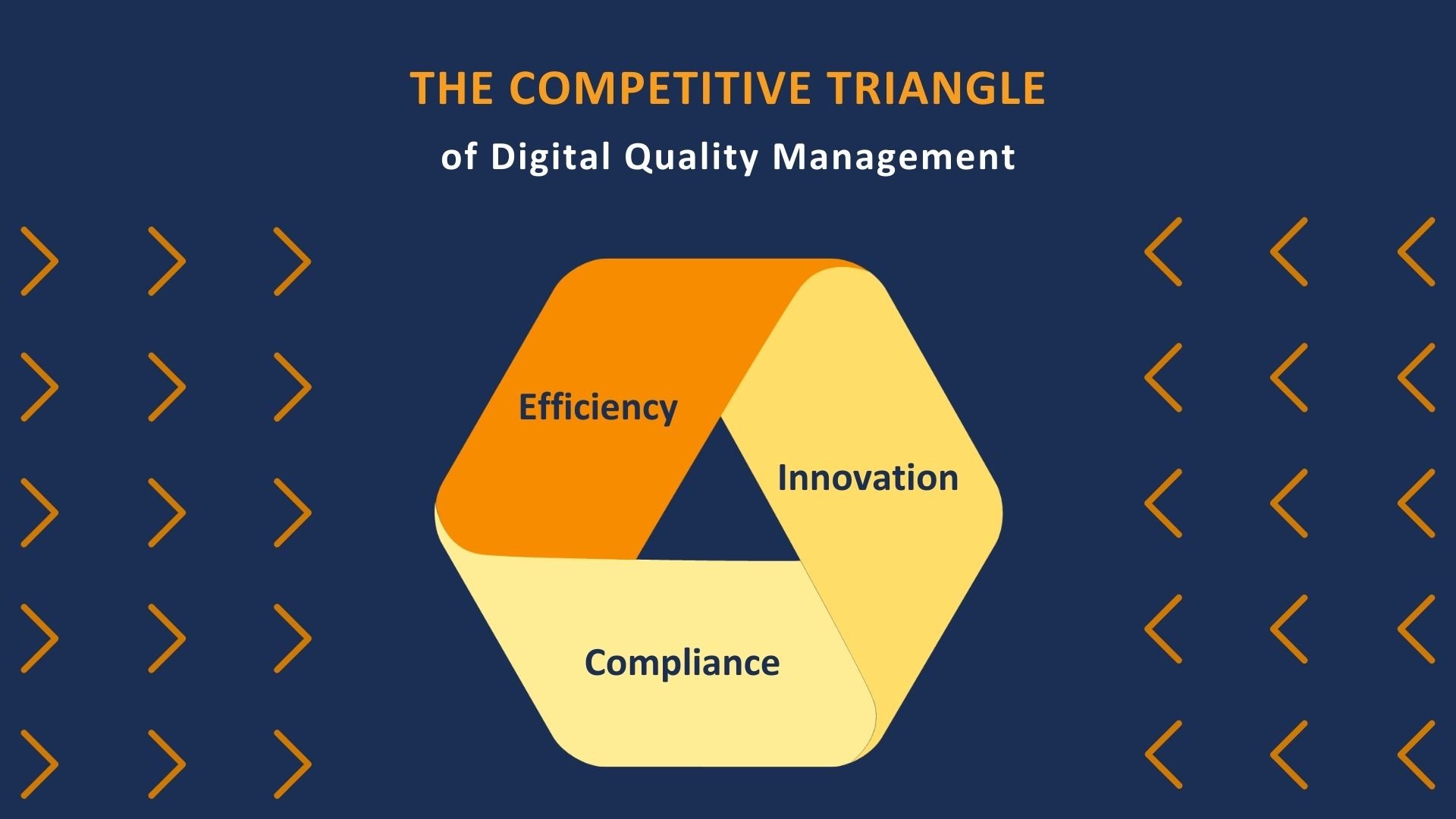The chemical industry is characterized by its long supply chains, diversity of markets, highly specialized products or materials, and scattered industrial or commercial footprints. The complex process maps that are required to address this challenging business environment often give place to overly complicated digital tools.
According to the WSJ, The disparity between the user experience, application features, and data integration when one compares consumer with industrial IT is still abysmal in the age of Industry 4.0. Specifically, most companies are still lagging behind in exploring the vast potential behind the digital transformation of their Quality Management function.

Ensure quality compliance by implementing global processes
First and foremost, a digital quality management system (QMS) must ensure that the organization achieves and maintains a status of compliance according to the selected standards and applicable customer requirements. One of the most important aspects of compliance is the ability to standardize process workflows across the organization. This seemingly simple goal might prove challenging when the industrial and commercial footprint is scattered across different geographies and when the business is divided into relatively independent units. By digitizing quality management processes, the organization is able to ensure a high-level harmonization of process inputs and outputs..
For example, a digital quality management system ensures that a change or a non-conformance will be handled in the same way regardless of the location or the product in question, therefore allowing for a true implementation of a globally designed QMS that operates in the same way locally.
Taking a more holistic view into Quality Management Systems, it is easy to conclude that it is extremely rare to use a single process when responding to quality issues, regardless of the reactive or proactive nature of the response to that quality issue. Therefore, in order to ensure that the final goal of compliance is achieved, integrating processes through seamless interfaces allows the organization to solve issues in a comprehensive manner, closing the loops between different actions, functions, and responsible people.
For example, a customer complaint might have originated from inaccurate documentation which, after having been updated, will trigger a refresh training whose records will be audited as a way to prove compliance. This illustrates well the importance of process integration through digital tools: four different processes have been used to address a single quality issue.
An increased focus on improving results rather than getting results
One of the most commonly mentioned challenges by Quality Managers in the Chemical Industry is the disproportional workload behind reporting cycles. In practice, any process must be monitored for performance but this usually means that a cumbersome administrative layer is added on top of the process itself. Apart from this wasteful use of highly-skilled resources, the action-to-report gap tends to be long, meaning the organization is reading too much into the past and lacking agility in decision making.
Digital Quality Management Systems prioritize process performance management by embedding and simplifying reports and dashboards. This allows the organization to focus more on improving results rather than getting the results: one-click report generation, interactive dashboards, and customizable indicators give the process manager the capability to retrieve decision-support information in a few seconds.
Increase efficiency by optimizing time, cost, and resources
Most of the value delivered by Digital Quality Management Systems consists in efficiency gains obtained by digitizing and automatizing process tasks. These gains might be difficult to reduce to a simple money figure as they are distributed throughout the entire organization and across multiple processes. However, it is exactly because of their scattered nature that the savings in work hours and the reduction in mishaps will be so impactful to the organization. For example, it is possible to substantially reduce the time it takes to create or update a global standard operating procedure by making use of a digital process that also incorporates a distribution workflow and automatic versioning of the document.
Digital systems applied to quality processes will also enhance cross-functional collaboration by allowing several process owners to work on the same issue at the same time and to always be aware of their responsibilities, avoiding a manual track-and-trace of the process steps, normally done by direct communication methods. The fact that there are multiple owners involved in the same process at different steps highlights as well the importance of centralizing the configuration and documentation of the Digital Quality Management System.
In practice, a Global Quality Team can design and rollout a single process which, while allowing for exceptional flexibility, will be executed in the same way in a production unit located in the US or in China, for example. The same logic applies to procedures, guidelines, or work instructions whose scope is global but whose application is local.
Nonetheless, unlocking these gains in efficiency of quality processes only makes sense in the big picture of things if complexity is not being added elsewhere. Specifically, the more processes that a Digital Quality Management System solution covers, the more the organization will be able to reduce the application landscape. This is a crucial point in keeping IT lean and clean by avoiding overlapping and redundant solutions to be in place, leading to cost savings in software licensing, storing space and training sessions.
Leverage innovation by adapting rapidly to new challenges
One of the defining marks of the Industry 4.0 movement is the incorporation of agility in the DNA of the organization: agile product development, agile production methods, and agile management styles. Quality Management and the solution that supports it are not immune to this “need for speed” when it comes to transforming challenges into new ways of working.
Quality processes consume and generate a considerable amount of critical information: deviations from product specifications that trigger non-conformances; technical alterations to the equipment that trigger changes; or customer observations that trigger complaints. Agile information gathering from the field, made possible by extending the digital Quality Management System to portable devices, such as tables and smartphones, reduces the gap between getting the information and using the information. This system portability requires specific features such as user-friendly interfaces or an offline mode in order to guarantee a seamless user experience regardless of the type of hardware being used.
Enhance transparency and collaboration across the supply chain
Analogously, the type of software employed by the initial Quality Management System can determine the range of work habits of the organization. The big divide is between device-based on-premise solutions and browser-based cloud applications. Given the dynamic nature of modern workplaces plus the everlasting mobility of the workforce, a browser-based cloud application will make information available anywhere, anytime, boosting productivity, transparency and agility in the Quality Management area.
Ultimately, no matter how upstream or downstream a company is operating, the ultimate objective is to involve the entire supply chain in the Quality Management System. The main reasons to pursue this goal is to mitigate the overall risk of supply (i.e. from materials to products) and to extend the efficiency gains beyond the company’s own boundaries. In practice, through digitalization of the quality processes, it is possible to bring-in the suppliers and the customers into the organization’s Quality Management Systems. Through secure and well-defined interfaces, different organizations can participate in the same process, reducing lead-times and information gaps.
Compliance, efficiency, and innovation - these three factors form the competitive triangle powering the digital transformation of the Quality Management function. The benefits of relying on modern cloud solutions extend far beyond the technology aspect allowing individuals and organizations to seamlessly collaborate around the globe, supporting new, agile, and remote ways of working, while increasing transparency and traceability of information across the entire supply chain. Connected is the new norm.
Ready to learn more about how digital transformation can transform quality management in your organization? Contact us today.
SHARE




